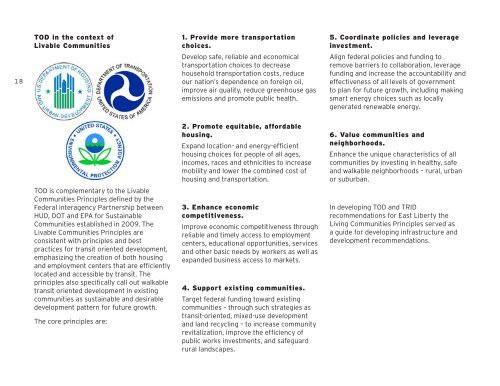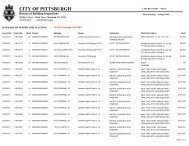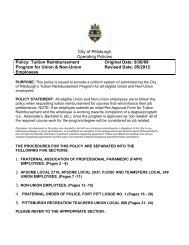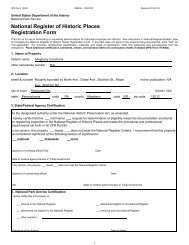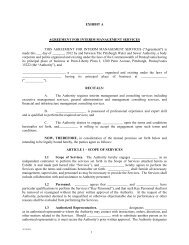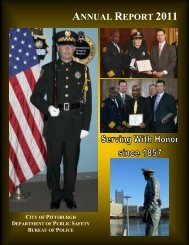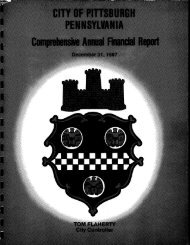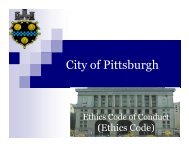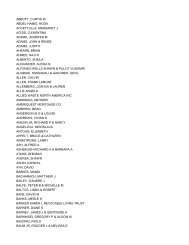east liberty station: realizing the potential - City of Pittsburgh
east liberty station: realizing the potential - City of Pittsburgh
east liberty station: realizing the potential - City of Pittsburgh
You also want an ePaper? Increase the reach of your titles
YUMPU automatically turns print PDFs into web optimized ePapers that Google loves.
18<br />
TOD in <strong>the</strong> context <strong>of</strong><br />
Livable Communities<br />
1. Provide more transportation<br />
choices.<br />
Develop safe, reliable and economical<br />
transportation choices to decrease<br />
household transportation costs, reduce<br />
our nation’s dependence on foreign oil,<br />
improve air quality, reduce greenhouse gas<br />
emissions and promote public health.<br />
5. Coordinate policies and leverage<br />
investment.<br />
Align federal policies and funding to<br />
remove barriers to collaboration, leverage<br />
funding and increase <strong>the</strong> accountability and<br />
effectiveness <strong>of</strong> all levels <strong>of</strong> government<br />
to plan for future growth, including making<br />
smart energy choices such as locally<br />
generated renewable energy.<br />
TOD is complementary to <strong>the</strong> Livable<br />
Communities Principles defined by <strong>the</strong><br />
Federal interagency Partnership between<br />
HUD, DOT and EPA for Sustainable<br />
Communities established in 2009. The<br />
Livable Communities Principles are<br />
consistent with principles and best<br />
practices for transit oriented development,<br />
emphasizing <strong>the</strong> creation <strong>of</strong> both housing<br />
and employment centers that are efficiently<br />
located and accessible by transit. The<br />
principles also specifically call out walkable<br />
transit oriented development in existing<br />
communities as sustainable and desirable<br />
development pattern for future growth.<br />
The core principles are:<br />
2. Promote equitable, affordable<br />
housing.<br />
Expand location- and energy-efficient<br />
housing choices for people <strong>of</strong> all ages,<br />
incomes, races and ethnicities to increase<br />
mobility and lower <strong>the</strong> combined cost <strong>of</strong><br />
housing and transportation.<br />
3. Enhance economic<br />
competitiveness.<br />
Improve economic competitiveness through<br />
reliable and timely access to employment<br />
centers, educational opportunities, services<br />
and o<strong>the</strong>r basic needs by workers as well as<br />
expanded business access to markets.<br />
4. Support existing communities.<br />
Target federal funding toward existing<br />
communities – through such strategies as<br />
transit-oriented, mixed-use development<br />
and land recycling – to increase community<br />
revitalization, improve <strong>the</strong> efficiency <strong>of</strong><br />
public works investments, and safeguard<br />
rural landscapes.<br />
6. Value communities and<br />
neighborhoods.<br />
Enhance <strong>the</strong> unique characteristics <strong>of</strong> all<br />
communities by investing in healthy, safe<br />
and walkable neighborhoods – rural, urban<br />
or suburban.<br />
In developing TOD and TRID<br />
recommendations for East Liberty <strong>the</strong><br />
Living Communities Principles served as<br />
a guide for developing infrastructure and<br />
development recommendations.<br />
East Liberty TRID Study | <strong>Pittsburgh</strong> Department <strong>of</strong> <strong>City</strong> Planning


